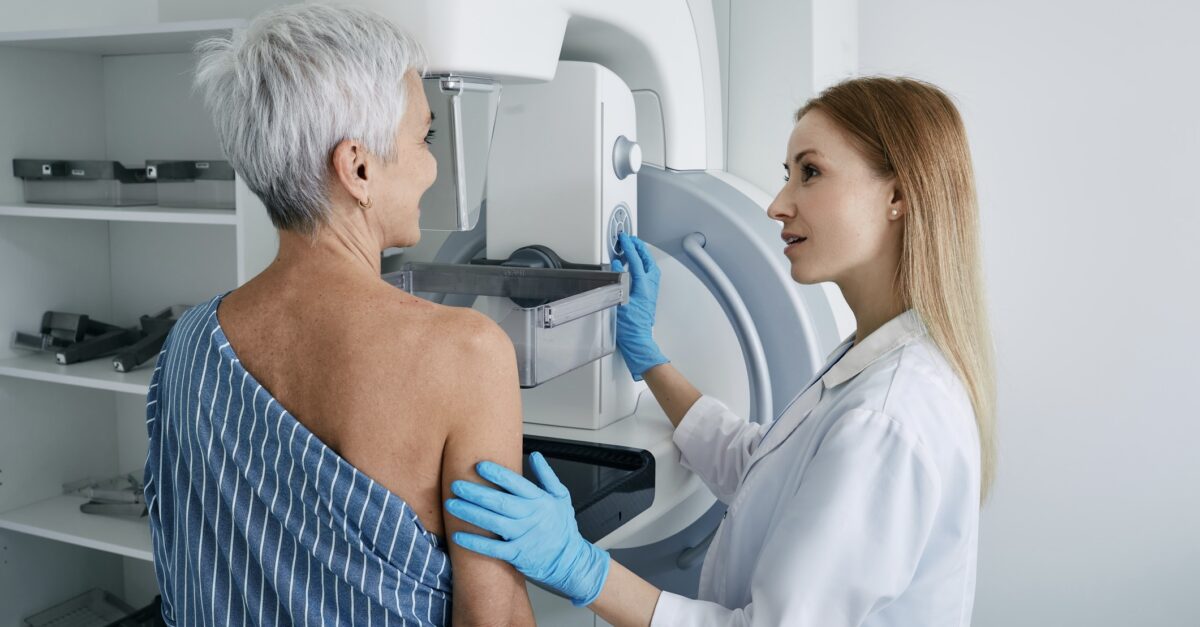You might have learned about the importance of breast self-exams as early as middle school. But the intricacies of when to get a mammogram, why it’s necessary, and what to expect may be a little more elusive.
Here’s more about one of the best methods for detecting breast cancer early, and what you can do to create a smooth experience.
What is a Mammogram?
A mammogram involves a series of X-ray pictures taken of your breast, which doctors use to examine the overall health of your breast tissue and any potential signs of breast cancer. These black-and-white images are captured by compressing your breast tissue between two imaging surfaces. (Uncomfortable, we know, but temporarily so!)
Even if you have no signs or symptoms of breast cancer, this specialized screening test provides an inside look of your breast and surrounding chest muscle, picking up early indications of breast cancer or other abnormalities that lie beneath the skin.
When to Mammogram?
No two women (and no two breasts — sometimes not even your own!) are exactly alike, so recommendations for when you should receive a mammogram may vary. Most commonly, women are advised to talk to their doctors about mammography screening ahead of their 40th birthday, and then undergo screening annually after their first. If you have a family history of breast cancer, you may need screening earlier in life, so at whatever age you begin your gynecological wellness exams, make it a part of the conversation.
Regardless of your age or amount of time since your last screening, bring any unusual lumps or bumps you notice during a self-exam to your primary care doctor or gynecologist’s attention right away.
Mammogram Best Practices
Once you’ve scheduled your mammogram, these simple steps will help make the procedure a smooth process.
Avoid Your Period: Your breasts can be sensitive a week before and then during your cycle. Try to schedule your mammogram a week after your period is over.
Say No to Deodorant: Many deodorants contain aluminum, an ingredient which may possibly alter mammogram results. It’s okay to go without it, just for this day.
Don’t Wear a Dress: Dresses and rompers can be super-comfy and soothing, but your mammogram requires you to strip from the waist up. Unless you’re comfortable hanging in your underwear with your technician, yoga pants or a skirt may make for a better uniform.
Leave Enough Time: While the screening itself typically takes about 15-30 minutes, you’ll need to check in and also complete some paperwork. Machines can also experience glitches, and initial images can take a while to review, so give your schedule enough space to keep you from getting stressed.
Bring a Friend: The more scheduled for a mammogram, the better, right? Coordinate your screening with a few friends, or just bring one along to wait for you. Afterward you can enjoy lunch, a spa treatment, or a long walk together to celebrate.
Be Ready to Discuss Results: Though waiting can be difficult, most mammogram results are shared within a couple of business days. If your screening is clear, all you need to do is schedule your next mammogram. But if a lump or mass is detected, your doctor will call to consult with you about your results, including what further tests may be needed.
At Peachtree Obstetrics and Gynecology, we know all about the stresses and inconveniences that can come with your mammogram. That’s why we have on-site digital mammography and in-house mammographers available. Our smart, caring providers can also consult with you about breast screening issues, including the difference between thermography and mammography, and which might be right for you. Contact our office at 770-487-9604, or schedule an appointment online.

